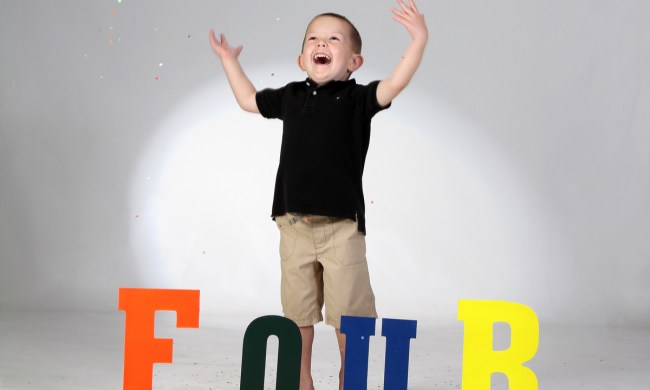Whether at the neighborhood swimming pool, a private venue, or a trip out on the boat, everyone will experience time near a body of water in their lives. And with that experience comes the risk of entering the water, willingly or not. If you have little ones, you already know how terrifying the thought of them being by water is if they don’t know how to swim.
No matter your child’s age, now is the time to think about getting them signed up for swimming lessons. Consider swim lessons offered at your local health club or through your child’s school. Whichever route you take, it’s important to make sure your kiddos know how to keep their head above water. And the sooner, the better! So, here’s our how-to guide to make sure your toddler takes to swimming lessons.

How soon is too soon for swim lessons?
When it comes to learning how to swim, babies as young as a year old can be taught how to turn over if they enter the water and how to tread back to the side of a swimming pool.
In fact, the American Academy of Pediatrics recommends parents with children as young as age one to begin teaching or researching a pediatric swimming instructor to teach your baby how to swim. According to the AAP, “Your child should learn basic swim skills: entering the water, coming to the surface, turning around, propelling through the water for at least 25 yards, and being able to exit the water.”
It’s recommended that parents use these swim times as opportunities to openly communicate with their children about pool safety. Your little one is never too young to learn the basics when it comes to water safety.

As always, safety first
Because infants could drown in less than 2 inches of water in less than 30 seconds, safety precautions must be taken anytime a baby goes into or around a swimming pool, lake, ocean, or any other body of water. By adhering to the following recommendations, parents will instill the importance of these safety measures to their children right away.
General pool safety rules and protocols recommended by the Gateway Region YMCA include:
- Never swim alone. Like the buddy system, this prevents unexpected drownings.
- Supervise children at all times while they are in the water. This includes putting down your phone, book, magazine, or any other possible distraction.
- Don’t play breath-holding games. Children are easily influenced and could compete in a game while not understanding the dangers of holding their breath under water.
- Always wear a life vest. If your child has not mastered the art of swimming, a life vest is always recommended.
- Don’t jump in the water to save a friend. Drowning victims will cling to anyone and anything to prevent drowning. This often results in both victim and rescuer losing their lives.
- Enter the water feet first. This prevents unintended head injuries.

Where is the best place to start swimming?
The location of your child’s swim lessons will vary depending on which delivery method you choose. If your little one will be taught by an instructor, these educators often use the same pool for each lesson – usually at a local health club or school.
By using the same location for each consecutive lesson, children gain a sense of familiarity as well as learn the same general safety procedures to follow each time. By reinforcing safety with routine, children are much more likely to retain the information taught — especially when instructing younger children. For this reason, parents who choose to instruct their own children how to swim should do their best to use the same pool for each lesson until the child becomes completely and fully comfortable in the water.

Parent-led swimming lessons
If you’ve elected to teach your child to swim from home versus using an instructor or class setting, you may be wondering what to do next. You could think, “I’ve done the safety talks, we’ve prepped the pool, and we’re ready to teach. Now what?”
- In-the-water skills. This involves turning over, breathing, paddling, floating, and finally, submerging the face without breathing in water. Though these seem complex, research has proven that 3-year-old toddlers can be taught these skills easily.
- Self-confidence. Though this doesn’t require physical training for you or your child, learning to step back and build your little swimmer’s self-confidence is a huge part of their swimming lessons and skill set. The excitement surrounding swim lessons builds and emboldens their skills.
Once you’ve set up the ground rules, emphasized safety, and enhanced security and awareness while around the pool area, the act of teaching a child to swim itself is not in fact hard. The key steps involved include having patience, consistency, calmness, and praise. If these recommendations are followed, a safe and fun experience should be enjoyed by your 3-year-old and yourself, in and out of the water.



